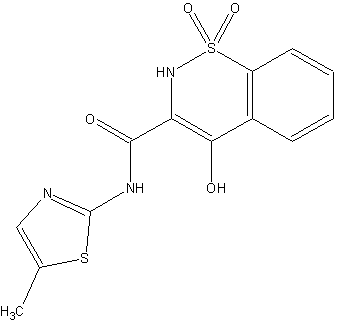In 2000, the three medical product review staffs of the U.S. Food and Drug Administration (FDA)--the Center for Drug Evaluation and Research, the Center for Biologics Evaluation and Research, and the Center for Devices and Radiological Health--approved 160 new drugs, biologic products and medical devices for use in the United States. Many of these approvals advance the prevention, diagnosis and treatment of serious and life-threatening diseases. The most important drugs that passed the FDA review for safety and effectiveness are listed in Table 1. Biologic products are listed in Table 2.
Among the new products are the first drug providing treatment of vancomycin-resistant bacterial infections, a promising new surgical system that incorporates robotic technology and the first treatment that slows the progress of wet age-related macular degeneration. The following are some of the patient groups who will particularly benefit from these FDA approvals.
Cancer Patients
Several products approved in 2000 contribute to the prevention, early diagnosis or treatment of cancer. Three of these products are medical devices: the Optical Biopsy System, a laser system that improves the ability to distinguish small harmless growths from precancerous growths in the colon; the Senographe 2000D, the first mammography system that produces digital images on a solid-state receptor instead of analog images on a radiographic film; and the FocalSeal-L Surgical Sealant, a glue for sealing air leaks in lungs following the removal of cancerous tumors.
Among the new cancer medications, two were approved for cancers of the white blood cells. Arsenic trioxide (Trisenox) was found to be safe and effective in the treatment of acute promyelocytic leukemia, and gemtuzumab/ ozogamicin (Mylotarg) was approved for the treatment of CD33-positive acute myeloid leukemia in patients 60 years or older. In addition, tamoxifen citrate (Nolvadex) was approved for a new indication, to reduce the risk of invasive breast cancer in women with preinvasive cancer of the ducts.
Infants and Children
Several new products approved last year for pediatric and obstetric use were either specifically designed for the youngest patients or were adult drugs with pediatric indications.
The most advanced new products include the OxiFirst Fetal Oxygen Saturation Monitoring System, which measures oxygen saturation in the infant's blood as a sign of fetal health during labor and delivery; Prevnar, the first multivalent conjugate pneumococcal vaccine for infants and toddlers younger than age two; and budesonide inhalation suspension (Pulmicort Respules), the first anti-inflammatory corticosteroid formulated for inhalation using a nebulizer in children between one and eight years of age. Another new pediatric drug is zanamivir (Relenza), for the treatment of uncomplicated influenza A and B in patients seven years and older.
Drugs approved in 2000 for adult and pediatric indications include oseltamivir (Tamiflu), an oral suspension for prophylaxis of influenza infection in adults and adolescents 13 years and older; a lopinavir/ritonavir combination (Kaletra), which received accelerated approval as a protease inhibitor for the treatment of human immunodeficiency virus; levothyroxine (Unithroid), the first single-ingredient oral levothyroxine product approved for the treatment of hypothyroidism; and tacrolimus (Protopic), an ointment for use in patients with moderate or severe eczema for whom standard eczema therapies present potential risks or who are not adequately treated by or do not tolerate standard eczema therapies.
The FDA also added pediatric use to the labeling of 13 adult drugs, including Motrin, Advil, Zantac and Nasalcrom, and approved lowering the age for implantation of the Nucleus 24 Cochlear Implant from 18 months to 12 months in infants who are profoundly hearing impaired.
Women's Health
The FDA approved several products to treat diseases that either exclusively or predominantly affect women. They include infliximab (Remicade), for the reduction in signs and symptoms of rheumatoid arthritis, and the cancer drug mitoxantrone hydrochloride (Novantrone) for the treatment of advanced or chronic multiple sclerosis. The agency also allowed continued marketing of two types of saline-filled breast implants that had been approved for breast augmentation and breast reconstruction in women 18 years or older.
Cardiac Patients and the Elderly
New products for patients with heart disease and the elderly include several novel devices and important medications. The Cordis Checkmate System and the Novoste Beta-Cath System use catheters to deliver radiation inside a coronary stent to help reduce the risk of new tissue growth; tenecteplase (TNKase) is a new tissue plasminogen activator for the reduction of mortality in patients with acute myocardial infarction; and verteporfin for injection (Visudyne), the first therapy to slow vision loss caused by wet age-related macular degeneration. In 2000, the FDA also approved the Vibrant Soundbridge, a surgically implanted hearing device.
Other Significant Approvals
Linezolid (Zyvox) is the first antibacterial drug approved to treat infections associated with Enterococcus faecium resistant to vancomycin; ciprofloxacin (Cipro) was approved to reduce the incidence or progression of inhalational anthrax infection; the Da Vinci Surgical System is a first-ever robotic device for use in laparoscopic gall bladder surgery and surgery for reflux disease; and Trufill n-BCA Liquid Embolic System is a new glue approved to help reduce blood loss by blocking blood vessels in the brain during a rare form of brain surgery.
The FDA also approved Apligraf, a new type of wound dressing to help heal diabetic foot ulcers; botulinum toxin type B (Myobloc), the first drug to reduce the severity of neck and shoulder muscle contractions; Malarone, a new combination drug for the prevention and treatment of acute, uncomplicated Plasmodium falciparum malaria; Positron Emission Tomography (PET) F-18 FDG, a radiopharmaceutical drug that assists in cancer assessments and in identifying reversible cardiac dysfunction; and OssaTron, a device that uses shock waves to relieve chronic severe heel pain when conventional treatment has been ineffective.
COPYRIGHT 2001 American Academy of Family Physicians
COPYRIGHT 2001 Gale Group



